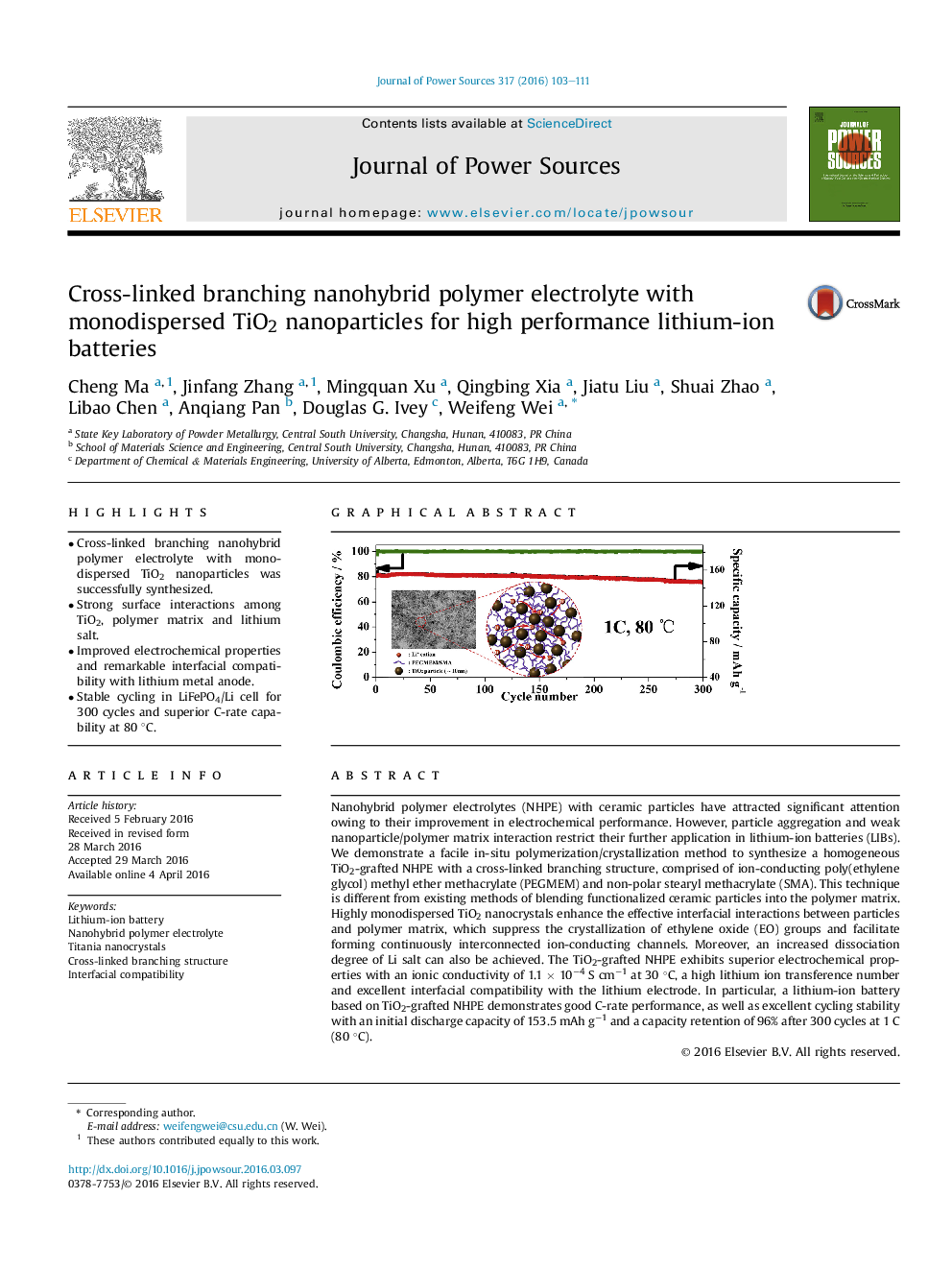| کد مقاله | کد نشریه | سال انتشار | مقاله انگلیسی | نسخه تمام متن |
|---|---|---|---|---|
| 1286142 | 1497915 | 2016 | 9 صفحه PDF | دانلود رایگان |

• Cross-linked branching nanohybrid polymer electrolyte with monodispersed TiO2 nanoparticles was successfully synthesized.
• Strong surface interactions among TiO2, polymer matrix and lithium salt.
• Improved electrochemical properties and remarkable interfacial compatibility with lithium metal anode.
• Stable cycling in LiFePO4/Li cell for 300 cycles and superior C-rate capability at 80 °C.
Nanohybrid polymer electrolytes (NHPE) with ceramic particles have attracted significant attention owing to their improvement in electrochemical performance. However, particle aggregation and weak nanoparticle/polymer matrix interaction restrict their further application in lithium-ion batteries (LIBs). We demonstrate a facile in-situ polymerization/crystallization method to synthesize a homogeneous TiO2-grafted NHPE with a cross-linked branching structure, comprised of ion-conducting poly(ethylene glycol) methyl ether methacrylate (PEGMEM) and non-polar stearyl methacrylate (SMA). This technique is different from existing methods of blending functionalized ceramic particles into the polymer matrix. Highly monodispersed TiO2 nanocrystals enhance the effective interfacial interactions between particles and polymer matrix, which suppress the crystallization of ethylene oxide (EO) groups and facilitate forming continuously interconnected ion-conducting channels. Moreover, an increased dissociation degree of Li salt can also be achieved. The TiO2-grafted NHPE exhibits superior electrochemical properties with an ionic conductivity of 1.1 × 10−4 S cm−1 at 30 °C, a high lithium ion transference number and excellent interfacial compatibility with the lithium electrode. In particular, a lithium-ion battery based on TiO2-grafted NHPE demonstrates good C-rate performance, as well as excellent cycling stability with an initial discharge capacity of 153.5 mAh g−1 and a capacity retention of 96% after 300 cycles at 1 C (80 °C).
Figure optionsDownload as PowerPoint slide
Journal: Journal of Power Sources - Volume 317, 15 June 2016, Pages 103–111